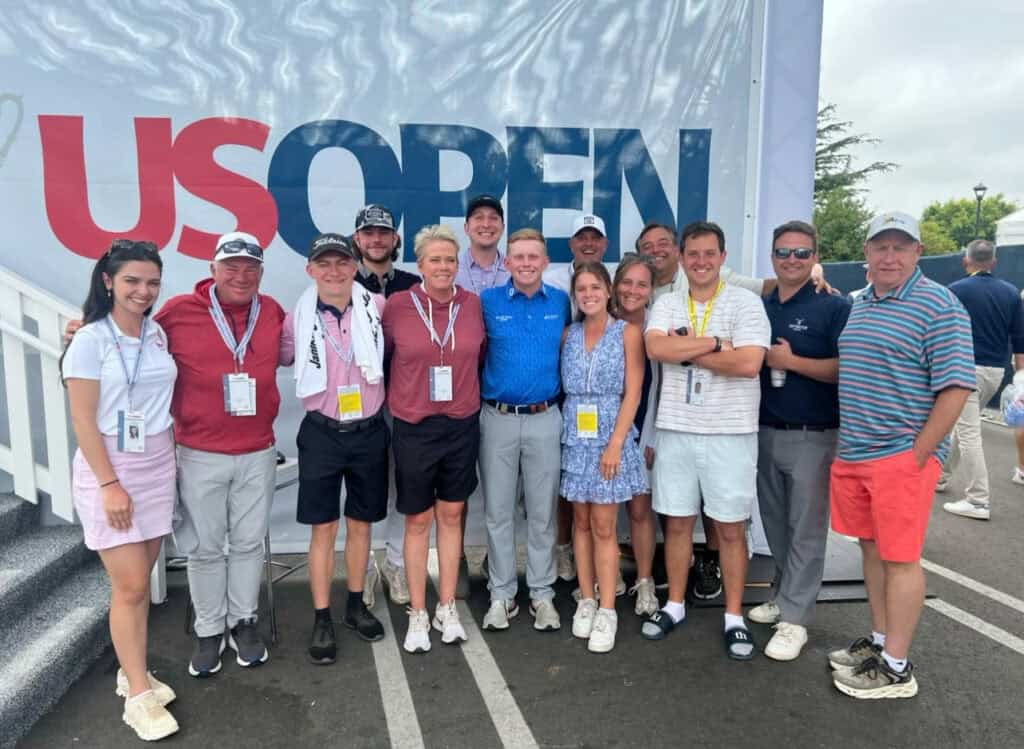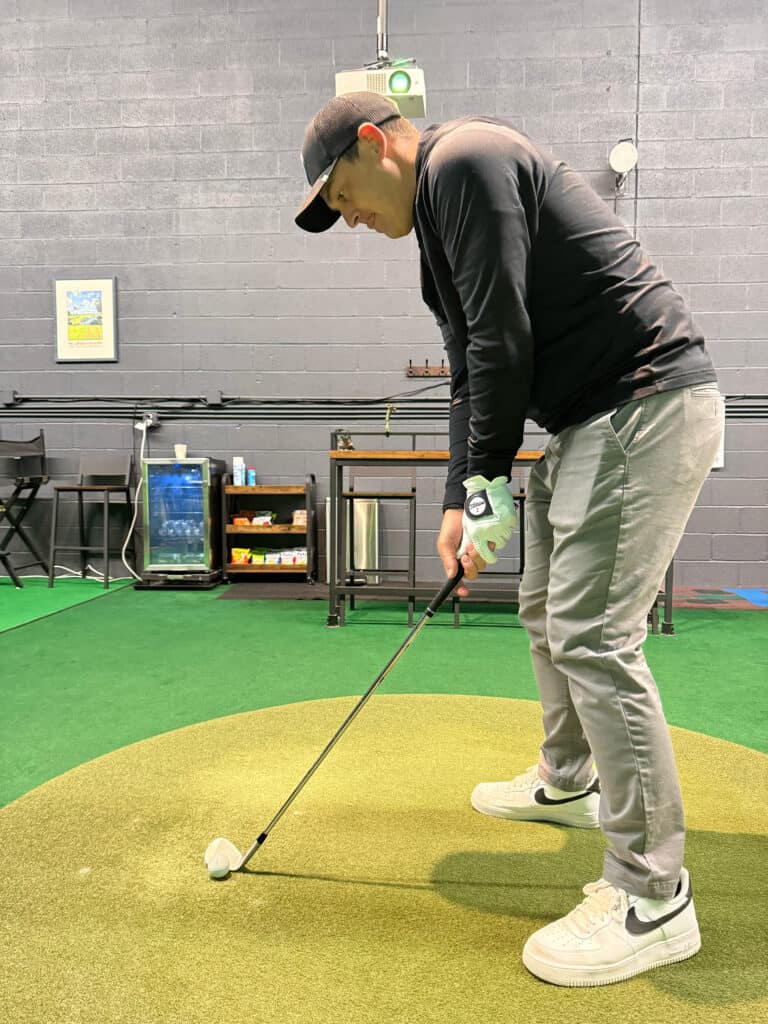An Exclusive Interview with Professional Golfer Maxwell Moldovan
Connor Clay
on
December 20, 2024
Maxwell Moldovan. It’s a name you may have heard much about if you existed in the northeast Ohio golf space in the last ten years. A two-time high school state champion with several other accolades to his name before he even attended college, Max made quite the name for himself before he even turned 18.
Now, he’s graduated from Ohio State and is working towards achieving his dream of playing golf for a living.
Listen to the Full Interview
Welcome back to Tee It Up Canton’s second interview in our series of golf conversations. My name’s Connor Clay, Vice President of Golf here at Tee It Up Canton, an indoor golf facility in Stark County, Ohio. We have three bays, making it a great place to practice golf in the winter. Today, I’m honored to have Maxwell Moldovan as our guest. Max, thanks for being here!
Yeah, thanks for having me.
If you don’t know Max, he’s a mythological creature of sorts in the golfing world. I’ve been taking lessons from your dad for years, hearing about your accomplishments, and now seeing you as an adult—it’s been incredible. Max recently graduated from Ohio State and is now pursuing professional golf. First question: How are you doing? It’s winter, you’re back in Ohio, and you just wrapped up Q School. How did it feel to get a taste of that environment?
It was a good experience. Unfortunately, I didn’t play as well as I’d hoped, but I learned a lot. The more experience you get as a young pro, the more it helps down the line. Although I didn’t make it through the second stage, I learned a lot about my game. Next time I’m in that situation, I’ll feel more comfortable. It’s nice to be home, celebrate Christmas with family and friends, and unwind after a long, strenuous year. I’m looking forward to a big 2025.
What does the road ahead look like for you now that you’re out of college? What are your goals for 2025?
Coming out of school, I finished in the top 25 on PGA Tour U, earning status on the Canadian swing of PGA Tour Americas. That also gets me status for the Latin swing in spring, so I’ll be down there in March, April, and May. My main goal for 2025 is to earn Korn Ferry status by year’s end, which can happen in various ways. Pro golf is an adjustment—playing for a living is different than playing just for the love of the game. I’m finding a balance between treating it as my job and still loving it. I’m excited for what 2025 holds.
You mentioned the PGA Tour Americas. Can you describe what that is, who’s on it, and how it works?
The PGA Tour is the pinnacle, followed by the Korn Ferry Tour, and then the PGA Tour Americas. It used to be two separate tours—PGA Tour Latin America and PGA Tour Canada—but now it’s one big season across both regions. At the end of the season, the top 10 on the points list earn full Korn Ferry status for the following year. Having status on this tour is a blessing, especially since many of my peers are struggling without any status. Although I didn’t have a great year in 2024, I’m grateful to have a place to compete next year.
Your dad has been my golf coach since my early 20s. Having a dad who played professionally and teaches golf—how did that impact your love for the game and improvement?
I fell in love with the game quickly. My dad never forced it on me. He’d take me to the golf course, go on cart rides, or play putt-putt on family vacations. My parents, both competitive athletes, did a great job of not forcing sports on me. I developed my love for golf naturally. My dad has been a huge resource—he started me in the game and built my swing. I still work with him a lot.
Do you still go to him for advice?
Absolutely. My dad knows my swing better than anyone. He’s seen it at its best and when it’s struggling. He played pro golf too, so he understands the challenges and has been a great support.
Did you ever dabble in other sports?
I played baseball, football, and basketball growing up. In middle and high school, I focused on basketball and golf. I loved basketball, partly because of my mom, who played in college. However, after breaking my wrist in freshman year, I decided to focus on golf.

Let’s take a step back and talk about your junior golf career. A lot of people in Northeast Ohio knew you before high school because you were winning tournaments. How did it feel going through all that?
It was a lot of fun. I was fortunate to have early success in US Kids events and the AJGA. That success helped me develop a love for competition. Some of my best memories are from high school and junior golf—traveling with my parents, friends, and teammates. Those were simpler times when every tournament didn’t feel like it impacted my future. I really enjoyed it.
Did you feel pressure from expectations because of your success and family connections? If so, how did you handle it?
I embraced it. I’ve always put more pressure on myself than anyone else does. That pressure has pushed me to succeed, but it’s also been a challenge at times. I try to focus on my God-given talent and use it to glorify God and inspire others. That perspective keeps me grounded.
Do you have a favorite memory from high school or junior golf?
Winning the Ohio State Championship as a sophomore and junior was special. Having 20 of my closest friends, my family, and my neighbors there to support me was amazing. In 2018, I also won co-medalist honors with Jackson Chandler, my teammate at Ohio State and now one of my best friends. Those memories and friendships are some of the best things about high school sports.

Let’s talk about your time at Ohio State. College golf doesn’t get as much attention as other levels. Can you give us some insight into it?
College golf is very different from high school. It’s mostly three-round tournaments with 10–20 teams, similar to pro events with large fields and lots of travel. Balancing school, travel, and practice is tough, but it teaches you to appreciate the game’s challenges. College golf is incredibly competitive, and my time at Ohio State was some of the best years of my life.
You’ve had the honor of playing in three U.S. Opens, making the cut in one of them. What are some of your coolest experiences from those events?
One of my favorite memories was playing a practice round with Scottie Scheffler at my first U.S. Open. Scottie is currently my favorite player because of both his golf game and his faith in God. So, needless to say, I was very nervous over my first tee shot. It’s also been amazing to share those experiences with my family and friends, who’ve supported me. Seeing their joy in being part of it makes it even more special.
What did you learn from playing with Scottie?
I learned a lot from watching him during the practice round. He spent most of his time around the greens, hitting countless chips and putts. That taught me how important the short game is and how small the margins are at the pro level.
How did you handle the pressure of competing at the highest level?
It’s tough, but I’ve learned to embrace it. I remember shaking while over an eight-foot putt in my first U.S. Open, but I made it. By the time I played the next year, I had learned to view pressure as a privilege. If you feel pressure, it means you’re where you want to be, chasing your dreams.

What advice would you give kids trying to improve their game?
Make practice fun so you don’t burn out. Play rounds with friends or practice on the course instead of just hitting balls on the range. Balance working on your weaknesses with improving your strengths. For example, wedges have always been a strength for me, so I’ve focused on mastering my numbers inside 150 yards, which is where you score in tournament golf.
How have technological advances in golf helped your game and the sport overall?
Technology has been huge. Tools like launch monitors and simulators are great for improving your game year-round, especially in places like Ohio where you can’t play outside during winter. At Ohio State, I used tools like TrackMan and PuttView a lot. These tools give you actionable data to improve. My next investment will probably be a GCQuad or TrackMan because they’re so helpful.
That’s great. I’ve learned so much about my own game using those tools too. It’s exciting to see how golf is embracing technology and innovation. Thanks so much for your time, Max. This was a great conversation.
Thank you for having me!





